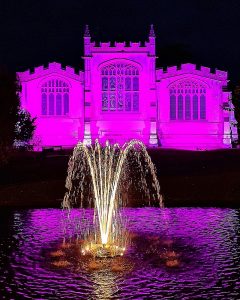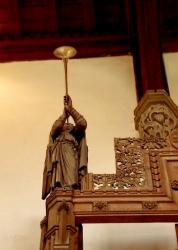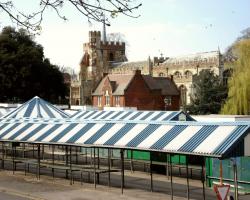St. Mary’s Church
St Mary’s Polio Awareness Nights

St Mary’s Church in Hitchin was lit up in purple on Saturday the 23rd and Sunday the 24th of October for World Polio Day. (24th of October 2021) It was organised by Anne Senechal of St Mary’s Church, alongside Hitchin Rotary Club to raise awareness that there are still people in the world that are not vaccinated against the hideous disease, polio.
St. Mary’s Church
The iconic view of Hitchin is of this one above; The great eastern window of the chancel of the Church of St. Mary’s built in c1450. When the High Altar was moved against the wall of the chancel in the 19th century, 4 feet of the great eastern window was lost. Imagine just how much more impressive this perpendicular style stainded glass window would have been with that extra length added!
God’s House in Hitchin
I took this photograph one day on the way to work early in the morning. It’s as if the church were overlooking and protecting the Warner’s Alms Houses and the market. The usual view is usually taken from wonderful The Triangle Cafe across to the War Memorial and the church’s porch and tower. (A pretty view but it makes the church seem isolated and to do with death rather than with living and life) This was taken from Biggin Lane by The Biggin, through the market across to the church. It was strange to see no one in the market or teenagers hanging around, drinking alcohol as usual. A nice gentle, serene start to the day.
Aerial View of Hitchin Market
This aerial shot taken from the top of the tower of Hitchin’s St. Mary’s Church, illustrates well that the market area is in a ‘hollow’ between raised areas. What you can’t see from here is that fact that The River Hiz runs through the middle of them and under the market. (Canalised sometime in the 1920s) From ground level, it is glaringly obvious that the designers of the more modern market (Moved many times around Hitchin) had no real thoughts of trying to fit it in to its surroundings; being concrete, brick and garish metal roofs. They could have designed it to ‘echo’ the church near it, the way that St Saviour’s Cloisters do that were built in the 1920s-30s.






